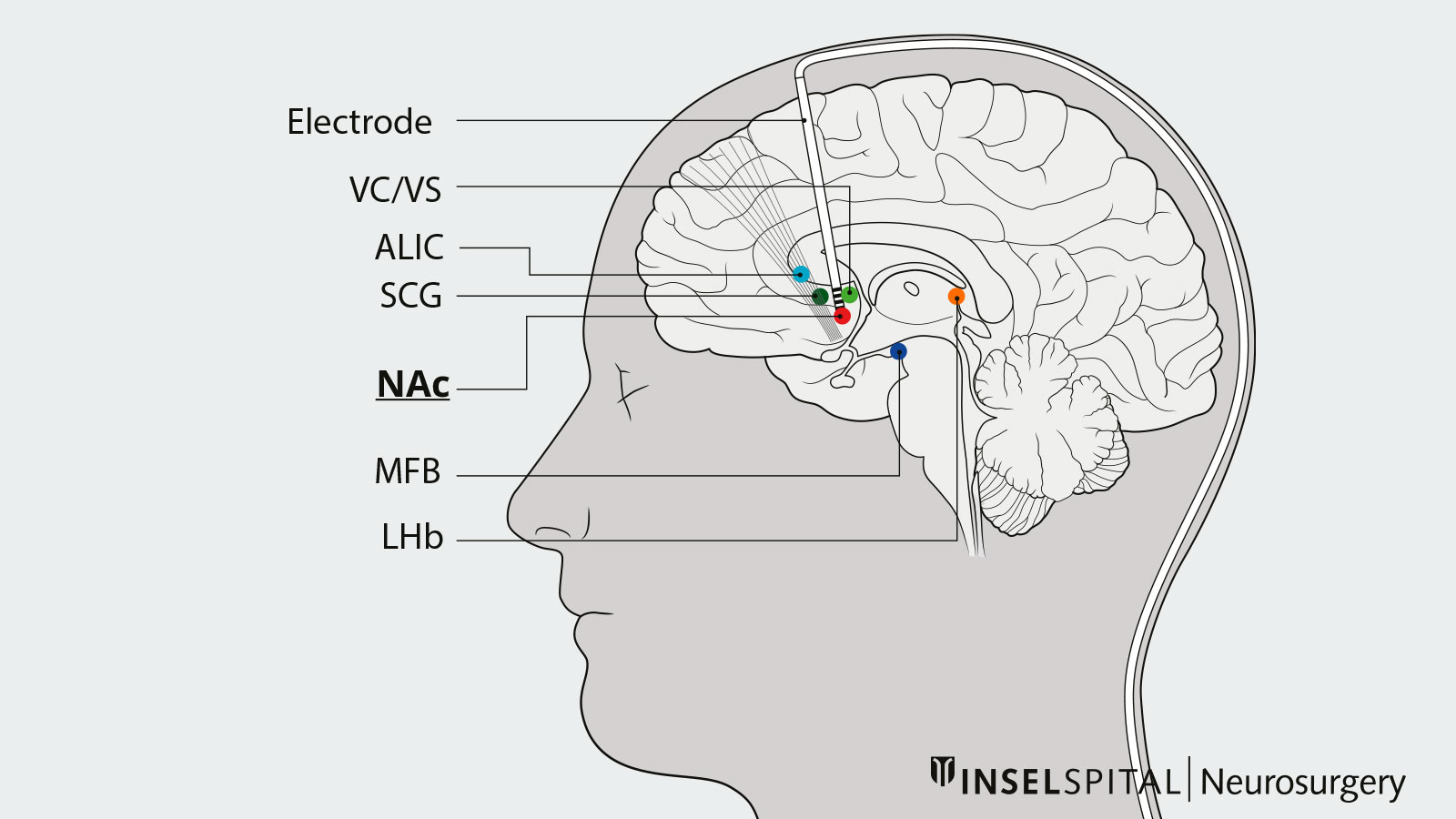The treatment of depression requires a multimodal treatment approach consisting of psychotherapy and behavioral therapy, medication therapy with antidepressants, and care provided by a psychiatrist. In severe cases, there is also the option of electroconvulsive therapy. Deep brain stimulation (DBS) is a treatment alternative for severely depressed patients who do not respond to conventional treatment approaches.
How common is depression?
Depressive disorders are among the most common mental illnesses. According to the Federal Statistical Office, 9% of the Swiss population suffer from depression, and 17% of the population will experience a depressive disorder at least once in their lifetime. Depression is typically episodic – depressive phases lasting on average six months to a year are followed by depression-free periods. Affected persons usually experience several depressive episodes, which can occur at different intervals.
What are the symptoms of depression?
Although the symptoms or physical-mental changes described by people affected can be very different in each individual case, there are three main symptoms that can be found as characteristic symptoms:
- low spirits and depressive mood
- loss of interest and joy
- lack of drive and exhaustion
Which are the types of depression?
A distinction is made between different forms of depression depending on the type and severity of the symptoms:
- Melancholic depression is characterized by joylessness, loss of libido, and loss of interest.
- In larval depression, the focus is on apparently physical, i.e. somatic, complaints. These can be headaches, back and neck complaints, but also abdominal pain, digestive disorders up to heart complaints.
- The agitated-aggressive form manifests itself in increased irritability and aggressiveness.
Therapy option: Deep brain stimulation
Up to 30% of patients with severe depression do not respond to multiple pharmacological therapies * and about 50% of these patients also do not respond to electroconvulsive therapy *. In these cases, deep brain stimulation or short DBS may be considered as a treatment option. In DBS brain structures are electronically stimulated that, according to neurobiological findings, are involved in the control of emotional processes such as affect behavior and motivation.

Current state of studies on DBS for depression
Since 2005, several non-blinded studies – so-called open-label studies – have been published on deep brain stimulation with promising results, whereby different brain structures were targeted and stimulated. These initial optimistic results were tempered after the publication of a first placebo-controlled study. No differences in antidepressant effects were found between patients who were actively stimulated in the ventral striatum and those who had the stimulation switched off after electrode implantation in the same area of the brain *.
A recent randomised placebo-controlled trial from the Netherlands was much more positive *. This group changed the anatomical target of stimulation to the anterior limb of the internal capsule. Stimulation had a clear antidepressant effect in 10 of 25 patients (40%) and at least a partial effect in another 6 patients (24%) compared with the placebo group.
In summary, the study situation regarding the effectiveness of deep brain stimulation in depression remains unclear and is the subject of intensive research. In particular, there is disagreement between experts and different centers about the correct anatomical target point to be influenced by the stimulation. Nevertheless, the results are promising and give cause for optimism.
We will therefore continue to discuss deep brain stimulation as a treatment alternative for patients with severe forms of depression for whom all other therapeutic measures have failed, and offer it to suitable candidates.
-
Rush A, Trivedi M, Wisniewski S, Nierenberg A, Stewart J, Warden D et al. Acute and Longer-Term Outcomes in Depressed Outpatients Requiring One or Several Treatment Steps: A STAR*D Report. American Journal of Psychiatry. 2006;163(11):1905-1917.
-
Heijnen WT, Birkenhäger TK, Wierdsma AI, van den Broek WW. Antidepressant pharmacotherapy failure and response to subsequent electroconvulsive therapy: a meta-analysis. J Clin Psychopharmacol. 2010;30(5):616-619.
-
Dougherty DD, Rezai AR, Carpenter LL, et al. A randomized sham-controlled trial of deep brain stimulation of the ventral capsule/ventral striatum for chronic treatment-resistant depression. Biol Psychiatry. 2015;78(4):240-248.
-
Bergfeld I, Mantione M, Hoogendoorn M, Ruhé H, Notten P, van Laarhoven J et al. Deep Brain Stimulation of the Ventral Anterior Limb of the Internal Capsule for Treatment-Resistant Depression. JAMA Psychiatry. 2016;73(5):456.
